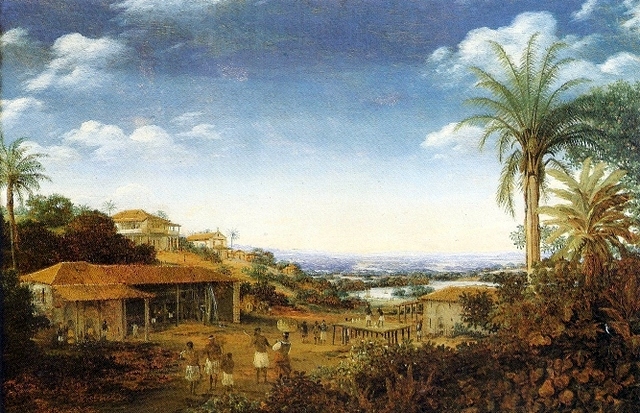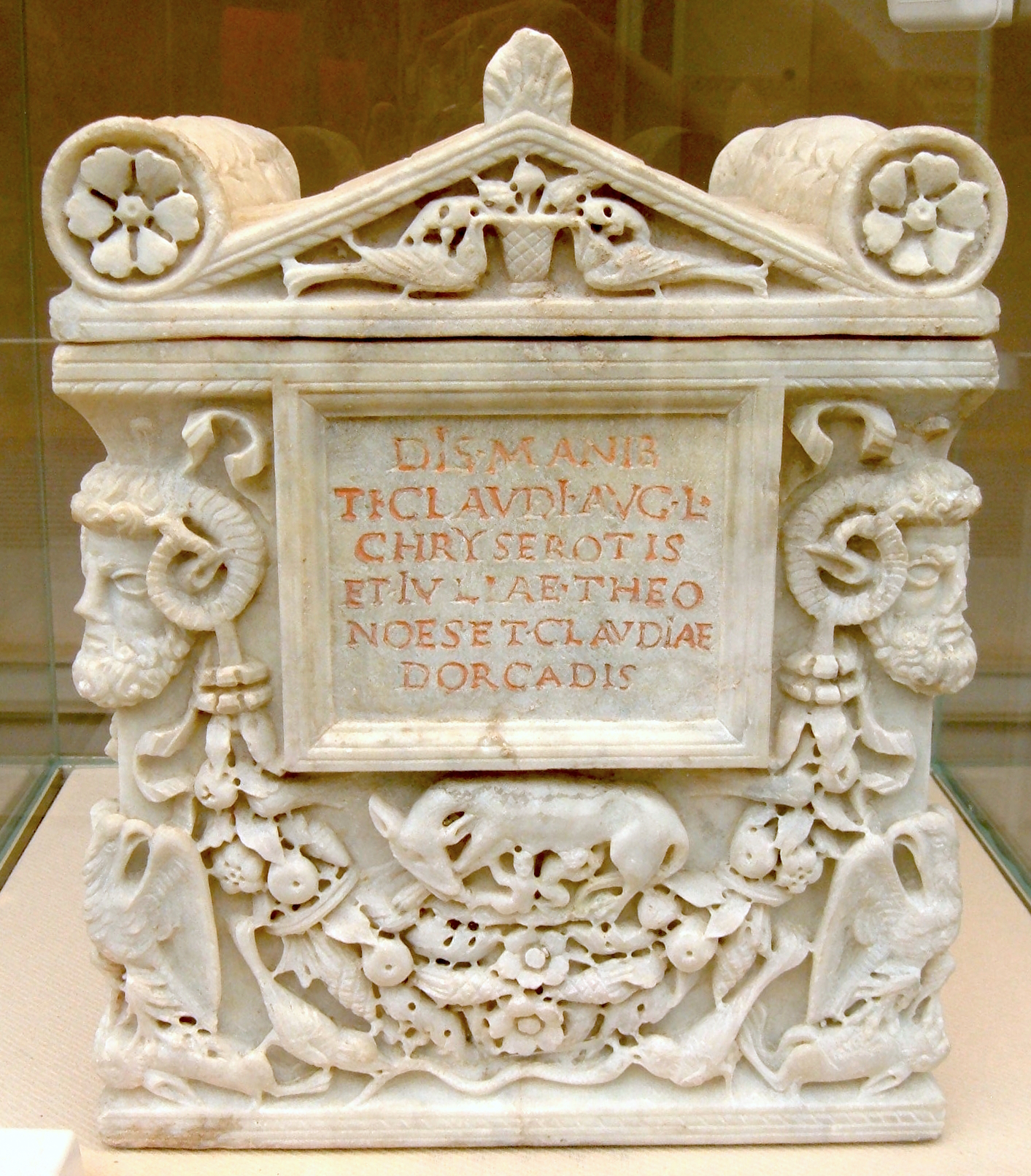|
Felipa Maria Aranha
Felipa Maria Aranha (c.1720 – c.1780) was a rebel leader as the Leader of the Mola ''quilombo''-community in Brazil. She was enslaved in Guinea as a child, who escaped slavery and became the leader of the Mola ''quilombo'' in Pará, Brazil. Her leadership enabled the community to resist the incursions of slave-owners and Portuguese troops. She is remembered by the remaining ''quilombolas'' and the Brazilian black community as an inspirational figure in their history. Biography It is thought that Aranha was born in the Costa da Mina (Gold Coast) region of what is now Guinea.PINTO, Benedita Celeste de Moraes«Slavery, Fugue and the Memory of quilombos in the Tocantins Region» Electronic Journals of PUC-SP. Retrieved on March 25, 2016 She was probably born between the years 1720 and 1730. She would have been enslaved as a child, around 1740. It is likely she was sold as a slave in the square of Santa Maria de Belém do Grão in Pará; the identity of the person who purchased her ... [...More Info...] [...Related Items...] OR: [Wikipedia] [Google] [Baidu] |
Quilombo
A ''quilombo'' (); from the Kimbundu word , ) is a Brazilian hinterland town, settlement founded by people of Afro-Brazilians, African origin, and others sometimes called Carabali. Most of the inhabitants of quilombos, called quilombolas, were maroons, a term for escaped slaves. Documentation about refugee slave communities typically uses the term mocambo (settlement), mocambo for settlements, which is an Ambundu word meaning "war camp". A mocambo is typically much smaller than a quilombo. "Quilombo" was not used until the 1670s, primarily in the more southerly parts of Brazil. In the Spanish language, Spanish-speaking countries of Latin America, such villages or camps were called . Its inhabitants are . They spoke various Spanish language, Spanish-African languages, African-based creole languages such as Palenquero. Quilombos are classified as one of the three basic forms of active resistance by enslaved Africans. They also regularly attempted to seize power and conducted ar ... [...More Info...] [...Related Items...] OR: [Wikipedia] [Google] [Baidu] |
18th-century Brazilian Women
The 18th century lasted from 1 January 1701 (represented by the Roman numerals MDCCI) to 31 December 1800 (MDCCC). During the 18th century, elements of Enlightenment thinking culminated in the Atlantic Revolutions. Revolutions began to challenge the legitimacy of monarchical and aristocratic power structures. The Industrial Revolution began mid-century, leading to radical changes in human society and the environment. The European colonization of the Americas and other parts of the world intensified and associated mass migrations of people grew in size as part of the Age of Sail. During the century, slave trading expanded across the shores of the Atlantic Ocean, while declining in Russia and China. Western historians have occasionally defined the 18th century otherwise for the purposes of their work. For example, the "short" 18th century may be defined as 1715–1789, denoting the period of time between the death of Louis XIV of France and the start of the French Revolution, ... [...More Info...] [...Related Items...] OR: [Wikipedia] [Google] [Baidu] |
18th-century Slaves
The 18th century lasted from 1 January 1701 (represented by the Roman numerals MDCCI) to 31 December 1800 (MDCCC). During the 18th century, elements of Age of Enlightenment, Enlightenment thinking culminated in the Atlantic Revolutions. Revolutions began to challenge the legitimacy of monarchical and aristocratic power structures. The Industrial Revolution began mid-century, leading to radical changes in Society, human society and the Natural environment, environment. The European colonization of the Americas and other parts of the world intensified and associated mass migrations of people grew in size as part of the Age of Sail. During the century, History of slavery, slave trading expanded across the shores of the Atlantic Ocean, while declining in Russian Empire, Russia and Qing dynasty, China. Western world, Western historians have occasionally defined the 18th century otherwise for the purposes of their work. For example, the "short" 18th century may be defined as 1715� ... [...More Info...] [...Related Items...] OR: [Wikipedia] [Google] [Baidu] |
Brazilian Slaves
Slavery in Brazil began long before the first Portuguese settlement. Later, colonists were heavily dependent on indigenous labor during the initial phases of settlement to maintain the subsistence economy, and natives were often captured by expeditions of bandeirantes (derived from the word for "flags", from the flag of Portugal they carried in a symbolic claiming of new lands for the country). The importation of African slaves began midway through the 16th century, but the enslavement of indigenous peoples continued well into the 17th and 18th centuries. Europeans and Chinese were also enslaved. During the Atlantic slave trade era, Brazil imported more enslaved Africans than any other country in the world. Brazil's foundation was built on the exploitation and enslavement of indigenous peoples and Africans. Out of the 12 million Africans who were forcibly brought to the New World, approximately 5.5 million were brought to Brazil between 1540 and the 1860s. The mass enslaveme ... [...More Info...] [...Related Items...] OR: [Wikipedia] [Google] [Baidu] |
Former Slaves
A freedman or freedwoman is a person who has been released from slavery, usually by legal means. Historically, slaves were freed by manumission (granted freedom by their owners), emancipation (granted freedom as part of a larger group), or self-purchase. A fugitive slave is a person who escaped enslavement by fleeing. Ancient Rome Rome differed from Greek city-states in allowing freed slaves to become plebeian citizens. The act of freeing a slave was called ''manumissio'', from ''manus'', "hand" (in the sense of holding or possessing something), and ''missio'', the act of releasing. After manumission, a slave who had belonged to a Roman citizen enjoyed not only passive freedom from ownership, but active political freedom ''(libertas)'', including the right to vote. A slave who had acquired ''libertas'' was known as a ''libertus'' ("freed person", feminine ''liberta'') in relation to his former master, who was called his or her patron ''( patronus)''. As a social class, free ... [...More Info...] [...Related Items...] OR: [Wikipedia] [Google] [Baidu] |
Guinean Women
Demographics of Guinea describes the condition and overview of Guinea's peoples. Demographic topics include basic education, health, and population statistics as well as identified racial and religious affiliations. Population According to the total population was in , compared to only 3 094 000 in 1950. The proportion of children below the age of 15 in 2010 was 42.9%, 53.8% was between 15 and 65 years of age, while 3.3% was 65 years or older . Population Estimates by Sex and Age Group (01.VII.2020) (Population in households only. Post-censal estimates.): Vital statistics Registration of vital events is in Guinea not complete. The website Our World in Data prepared the following estimates based on statistics from the Population Department of the United Nations. Demographic and Health Surveys Total Fertility Rate (TFR) (Wanted Fertility Rate) and Crude Birth Rate (CBR): Fertility data as of 2012 and 2018 (DHS Program): Life expectancy Ethnic groups *Fulɓe ... [...More Info...] [...Related Items...] OR: [Wikipedia] [Google] [Baidu] |
1780s Deaths
Year 178 ( CLXXVIII) was a common year starting on Wednesday of the Julian calendar. At the time, it was known as the Year of the Consulship of Scipio and Rufus (or, less frequently, year 931 ''Ab urbe condita''). The denomination 178 for this year has been used since the early medieval period, when the Anno Domini calendar era became the prevalent method in Europe for naming years. Events By place Roman Empire * Bruttia Crispina marries Commodus, and receives the title of '' Augusta''. * Emperor Marcus Aurelius and his son Commodus arrive at Carnuntum in Pannonia, and travel to the Danube to fight against the Marcomanni. Asia * Last (7th) year of ''Xiping'' era and start of ''Guanghe'' era of the Chinese Han dynasty. * In India, the decline of the Kushan Empire begins. The Sassanides take over Central Asia. Religion * The Montanist heresy is condemned for the first time. Births * Lü Meng, Chinese general (d. 220) * Peng Yang, Chinese official (d. 214) ... [...More Info...] [...Related Items...] OR: [Wikipedia] [Google] [Baidu] |
1720s Births
Seventeen or 17 may refer to: *17 (number) * One of the years 17 BC, AD 17, 1917, 2017, 2117 Science * Chlorine, a halogen in the periodic table * 17 Thetis, an asteroid in the asteroid belt Literature Magazines * ''Seventeen'' (American magazine), an American magazine * ''Seventeen'' (Japanese magazine), a Japanese magazine Novels * ''Seventeen'' (Tarkington novel), a 1916 novel by Booth Tarkington *''Seventeen'' (''Sebuntiin''), a 1961 novel by Kenzaburō Ōe *'' Seventeen'' (''Kuraimāzu hai''), a 2003 novel by Hideo Yokoyama * ''Seventeen'' (Serafin novel), a 2004 novel by Shan Serafin Stage and screen Film * ''Seventeen'' (1916 film), an American silent comedy film *'' Number Seventeen'', a 1932 film directed by Alfred Hitchcock * ''Seventeen'' (1940 film), an American comedy film *'' Stalag 17'', an American war film *''Eric Soya's '17''' (Danish: ''Sytten''), a 1965 Danish comedy film * ''Seventeen'' (1985 film), a documentary film * ''17 Again'', a 2009 film wh ... [...More Info...] [...Related Items...] OR: [Wikipedia] [Google] [Baidu] |
Jarid Arraes
Jarid Arraes (born 12 February 1991, Juazeiro do Norte) is a Brazilian poet and writer. She is the writer of such books as ''As Lendas de Dandara'', ''Heroínas Negras Brasileiras em 15 cordéis'', ''Um buraco com meu nome'', and ''Redemoinho em dia quente''. Arraes lives in São Paulo, where she created the Women's Writing Club ( Portuguese: ''Clube da Escrita Para Mulheres).'' To date, she has more than 70 publications in the cordel literature style, including the biographical collection ''Heroínas Negras na História do Brasil''. Biography Early life Arraes was born in 1991 in Juazeiro do Norte, Ceará. During her childhood, Arraes grew up with a strong connection to literature, being most acutely influenced by family. She is a descendent of Mestre Noza, considered one of the city's greatest artists and a pioneer in cordel literature. Her grandfather, Abraão Batista, was a poet, woodcutter, sculptor, ceramist, engraver, and teacher. From the end of the 1960s, he had al ... [...More Info...] [...Related Items...] OR: [Wikipedia] [Google] [Baidu] |
Guinea
Guinea, officially the Republic of Guinea, is a coastal country in West Africa. It borders the Atlantic Ocean to the west, Guinea-Bissau to the northwest, Senegal to the north, Mali to the northeast, Côte d'Ivoire to the southeast, and Sierra Leone and Liberia to the south. It is sometimes referred to as Guinea-Conakry, after its capital Conakry, to distinguish it from other territories in the Guinea (region), eponymous region, such as Guinea-Bissau and Equatorial Guinea. Guinea has a population of 14 million and an area of . Formerly French Guinea, it achieved independence in 1958. Guinea has a history of military coup d'état, coups d'état.Nicholas Bariyo & Benoit FauconMilitary Faction Stages Coup in Mineral-Rich Guinea ''Wall Street Journal'' (5 September 2021).Krista LarsonEXPLAINER: Why is history repeating itself in Guinea's coup? Associated Press (7 September 2021).Danielle PaquettHere's what we know about the unfolding coup in Guinea ''Washington Post'' (6 Septembe ... [...More Info...] [...Related Items...] OR: [Wikipedia] [Google] [Baidu] |





